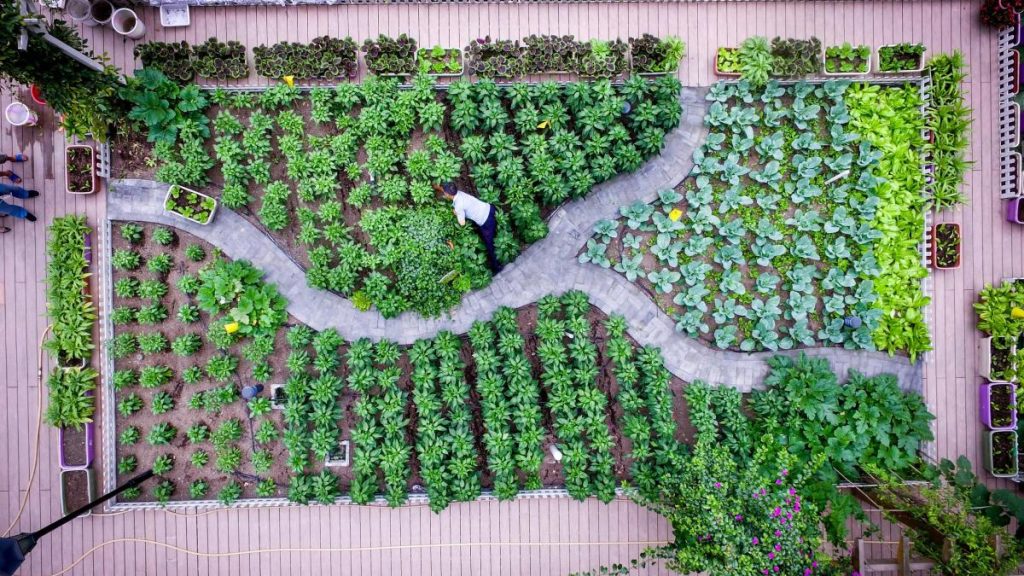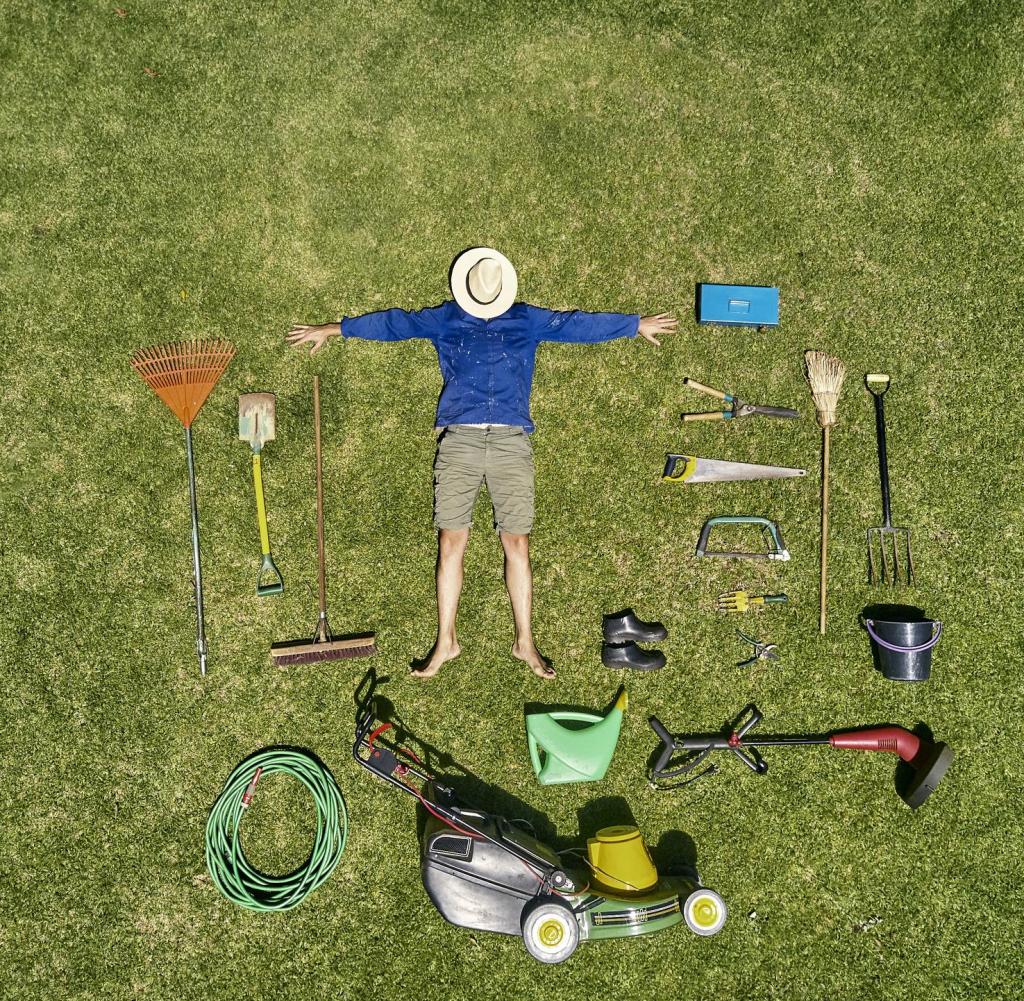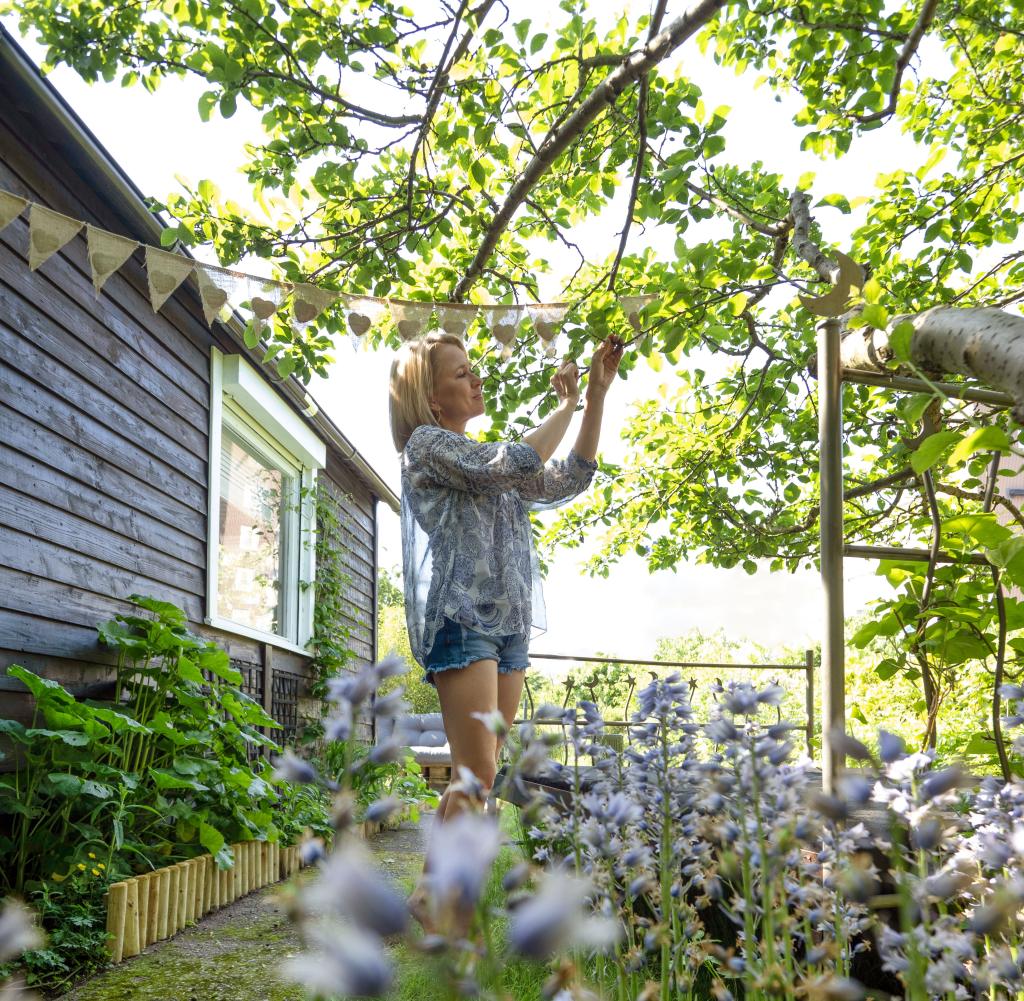DrThe future of agriculture lies in the center of the Ruhr region, on the roof of the work center in Oberhausen. On the fifth floor, in a modern greenhouse, berries, herbs and lettuce grow. The harvest is impressive: 100,000 heads of lettuce, 200,000 bowls of herbs and 500 kilograms of strawberries grow each year on an area of 940 square metres. “It’s being sold on Open Roof Garden Days, to local restaurants and to a catering company,” says Eletta Wigan, a spokeswoman for the project co-founded by the city.
The operator of the rooftop garden is Brandenburg’s Exner Grüne Innovation. “It will be a challenge in the future to provide people with food in cities because cultivated areas are limited,” says company president Wolfgang Grüne.
The Greens are convinced that at least part of the agricultural production should be moved to the city – also to enhance climate protection: “City farming conserves resources because transportation routes are much shorter and carbon dioxide consumption is lower.”
Oberhausen’s experiment aims to prove that a part of feeding the world can also be ensured in cities. There are currently 7.96 billion people on Earth, and the United Nations predicts that there will be 9.7 billion people in 2050. Added to this is continued urbanization – more and more people around the world are moving to urban areas. Small gardens in the middle of densely populated residential areas will be a solution to supply them. Thanks to the new technology, even now every ordinary resident can grow vegetables and fruits at home in his own apartment.
The method the company uses at the Altmarkt in Oberhausen is called hydroponics. The word is made up of the Greek terms for water (water) and action (ponos). Plant roots dangle in a nutrient solution that supplies them with necessary minerals.
“Herbs and leafy greens grow faster as a result,” Groun says. “We can harvest heads of lettuce in just five to eight weeks.” This method also saves water. In order to grow one kilogram of tomatoes in the ground in the field, 400 liters are required, and the hydroponic method is only 70 liters.
In Germany, some manufacturers offer smaller indoor gardening systems, while in the United States, soilless farming on the outskirts of major cities is already an independent branch of the economy. AeroFarms in New York alone increased sales of farm produce produced on premises last year from 2.5 to nearly $4 million. Publicly traded competitor Appharvest generated more than $8.9 million in sales in 2021.
space gardening technology
Both benefit from a NASA project. The US space agency has perfected farming to ensure the supply of astronauts and scientists on the ISS. Then the startups embraced the idea and started growing lettuce, vegetables, and berries at former automobile plants in Detroit.
One startup gave birth to Planted Detroit, a vertical farm located in a storage shed in the harbor and industrial district of Lafayette Street. Your customers are the organic stores, markets and weekly restaurants. “We harvest our plants daily and ship them within the next few hours,” says Tom Adamczyk, founder and CEO of Planted Detroit.
Guenter Vornholz is convinced that urban agriculture can breathe new life into Germany’s empty industrial buildings: “There are thousands of unused former factories in the country, not all of which have been demolished, but it is not worth converting them into office or apartment buildings,” says the economics professor Real Estate at EBZ Business School in Bochum.
In Herne, Exner Grüne Innovation is currently converting an old nuclear bunker into a vertical farm. Irish investor Greenman wants to build two greenhouses, nine meters high, in a retail park in Berlin for his Greenman Open fund. “We want to create one of the most sustainable vertical farming systems in Germany,” says Mario Gatino, managing director of Bottiger Farm. The Greenman subsidiary is said to operate the towers. She wants to grow parsley, chives, basil, and leafy greens like watercress and mustard leaves to sell them fresh every day in her retail garden supermarkets.
homemade indoor garden
Hydroponics is also gaining importance in private homes. For Swiss software developer Danilo Bargen, hydroponics is “one of the easiest ways to grow lettuce or spices at home in a rather dark apartment,” he wrote in his blog about new technologies. All that is required is an LED growth lamp that emits blue light in the spectral range between 400 and 490 nm and red light in the range from 640 to 700 nm.
Also a container for the nutrient solution and an attachment with holes through which the plant roots can absorb the nutrient solution. Bargen calculates that such a set for growing six heads of lettuce can be made by yourself for as little as €60.
If you want to make it easier on yourself, you can use the Kratke method, explains biotechnologist Harry Bilawsky, who runs the internet portal Hydroponik.eu. In the process developed by American biologist Bernard Krattke, the container of the nutrient solution is first lined with expanded clay and then filled. The poor slurry of lime absorbs the nutrient solution and then continuously releases it into the roots of the plants.
“While a nutrient solution is frequently added to any other hydroponic culture, this is not necessary using the Krattky method,” says Bilawsky. The more aqueous nutrient solution absorbed by plants, the greater the space between the substrate and the water surface: “This gives the plants enough minerals and at the same time oxygen to the roots.”
Even the major suppliers have now gone into business with the hydroponics systems of the occupying owners. Bosch Siemens Hausgeräte (BSH) launched the “SmartGrow” series in 2018. With the SmartGrow Life measuring 33 x 17.5 cm at € 170, more than 50 different types of herbs, salads and edible flowers can be grown. Small LEDs produce daylight. The magnetic coupling pump constantly stirs the nutrient solution, which only needs to be replenished every three weeks.
Bosch spokeswoman Franziska Knöckelmann says growing plants using hydroponic systems in one’s home “has evolved from a niche topic to a trend that attracts the interest of an ever-widening group of buyers”. Many customers wanted to learn about the technology as well.
The latter coincides with the experiments in Oberhausen. “Many visitors come first to learn more about the cultivation method. Then they buy herbs and salads with more enthusiasm,” says project spokeswoman Wiegand.

“Tv expert. Hardcore creator. Extreme music fan. Lifelong twitter geek. Certified travel enthusiast. Baconaholic. Pop culture nerd. Reader. Freelance student.”









More Stories
Chocolate storm in Türkiye – the Swiss are confused
Big Topics at New UBS's First General Meeting – News
Traditional department store Globus – This is the Thai family company behind Globus – News